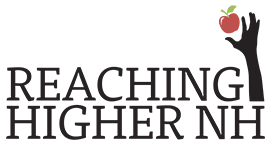Sanborn Regional High School principal Brian Stack – together with the school’s teachers, administrators and students – has transformed the learning culture of SRHS. By moving to a competency-based learning model, the school has putting students at the center of their own learning and has won national recognition in the process. Sanborn Regional High School was named as a “leader in competency education” by Getting Smart two years in a row and been featured in many national meetings of educators. And the Sanborn Regional School District was recently awarded a $100,000 grant from the Nellie Mae Education Foundation, the Lawrence W. O’Tool award, in recognition of its success in organizing education around student centered learning.
Principal Stack sat down with CompetencyWorks to discuss the ways in which student centered learning has changed his school over the past six years:
Each day as I interact with our teachers and our students, I am reminded to what extent our decision to move to a competency based model has positively influenced our school’s culture and climate, and our philosophy about learning. Today we are graduating students who have never known any other educational system than the one I described above. We spend a great deal of time with our new staff each fall indoctrinating them with our beliefs about teaching and learning. Each day I see small victories from our work that range from students who are being held to higher standards to teacher teams who continue to advance their own understanding and application of the competency education philosophy. I challenge you to ask any of my teachers if they could ever go back to a traditional mindset and I can assure you that you won’t find one who would. We have truly transformed our professional culture into one focused on student learning.
Stack says that there are a several key impressions visitors take away from their visits to his school. Among them is the importance of teamwork between teachers, the key role of rigor and flexibility in student assessment, and the fact quality instruction–not assessments or grades–is what engages learners. Stack says that individualizing instruction as much as possible and emphasizing concrete, measurable learning objectives for students empowers them, and that reassessment and reflection are part of the learning process, not an admission of failure. These elements have created a winning model in which students and teachers thrive, all while preparing students for life after graduation.
Read the full article here.








